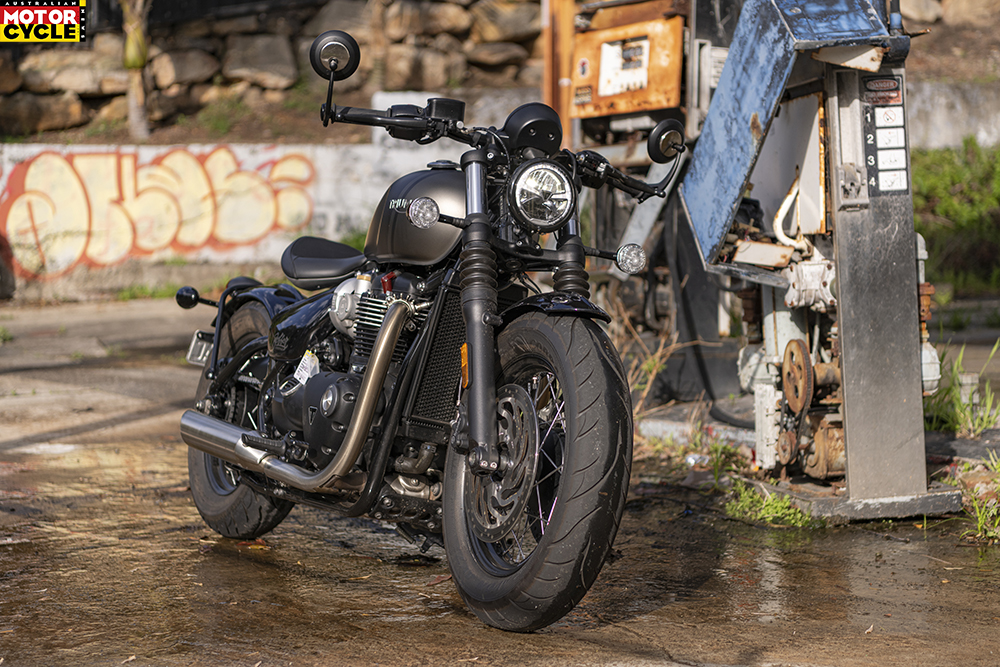The 2021 Triumph Bobber has received a handful of updates for the new model year, but is the Bobber all show and no go?
If the definition of a bobber is a bike that’s had all the unnecessary bits removed, then is the 2021 Triumph Bobber really a bobber at all? Sure, it looks like a pared-down Bonneville with its small single-seat, its minimalist front mudguard and its blacked-out finish, but it’s also adorned with some superfluous extras that appear purely for aesthetic appeal.
I’ve no doubt the Bonneville Bobber is first and foremost a styling exercise designed to appeal to those who love the bobber look but don’t want to hack away and remove bits and pieces from a bike by themselves… and in that respect, it’s a success.
Why? The Bonneville Bobber is the most minimalistic off-the-shelf bobber on the market and, ipso facto, it’s the best-looking off-the-shelf bobber on the market.
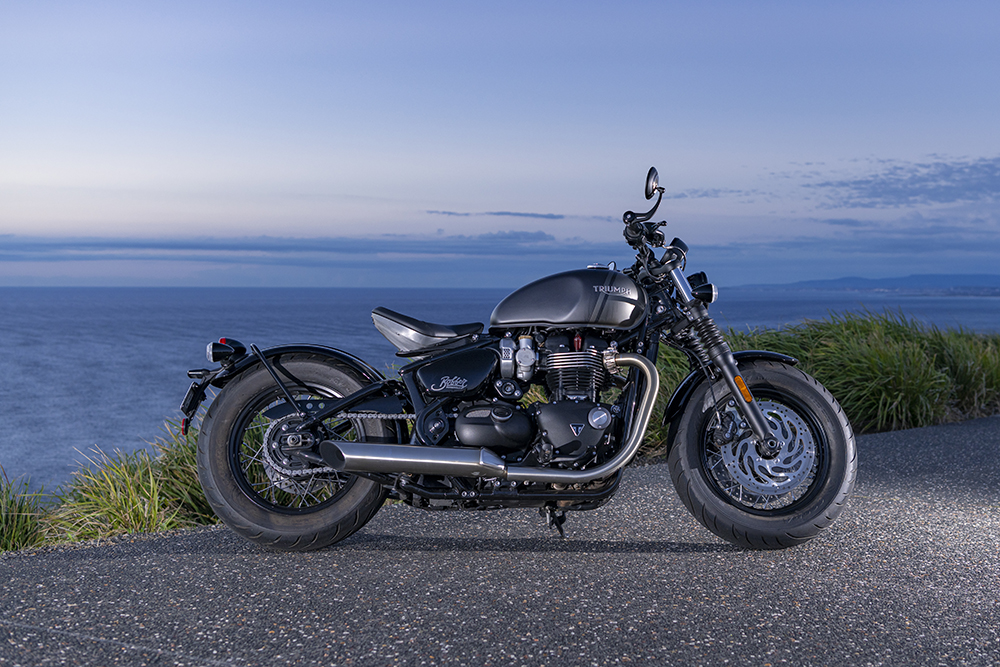
What about those superfluous extras? The minor detail items like the faux carbies that Bonnies have run since the introduction of fuel injection to the range back in 2009, and the brushed-aluminium seat base with the small brass Triumph plaque. A true bobber enthusiast would have no need for such embellishments, but when your bobber is all about style and not-so-much about weight saving, then a few little extras here and there are entirely forgivable.
It’s those extras that finish off the look of the Bonneville Bobber, along with other details like the fork gaiters, the ’bar-end mirrors, the straight-line exhaust, the cage-style swingarm, the basic frame around the rear mudguard and the fabulous-looking rear-shock linkage.
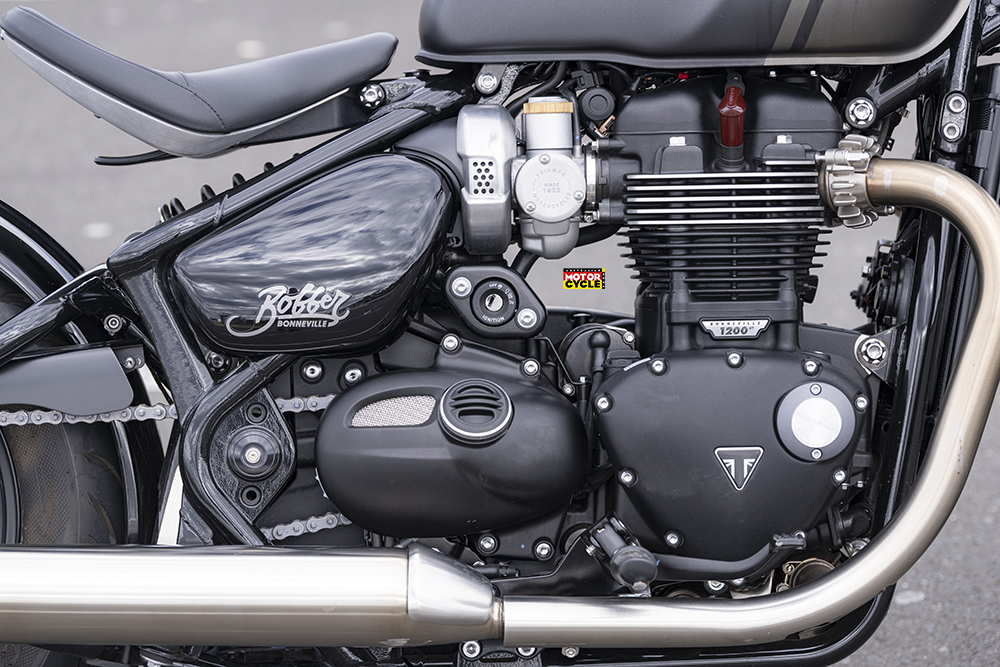
Step back and look at the whole Bobber picture and the detail elements take a back seat to the overall design. This is an aggressive bike with a menacing forward stance, with that big 1200cc parallel twin taking centre stage. The clearly visible frame tapers off nicely to the rear and the top frame tubes line up perfectly with the top swingarm tubes to give the Bobber a hardtail look. And the 16-inch tyres look chunkier than they really are, thanks to the spoked black rims.
Okay, so it’s beginning to sound like I knocked back a few too many beers while admiring the Bobber in my shed the other night, but even a sober bloke would have to admit that it’s a decent-looking machine.
Despite that pared-back bobber design, the Bonnie Bobber is no lightweight, tipping the scales at 251kg ready to ride. For reference, that’s 15kg more than a Bonneville T120, and a whopping 35kg more than a Speed Twin, although it could be argued that because it’s 12kg lighter than the Bonneville Speedmaster with which it shares more componentry, the Bobber really is a bobber. Either way, the weight of the Bobber is immediately evident when you heave it off its sidestand. It’s easy to move around though, thanks to the super-low (690-700mm) seat which, incidentally, can be moved up and down, and forwards and rearwards, by loosening a couple of nuts underneath it.
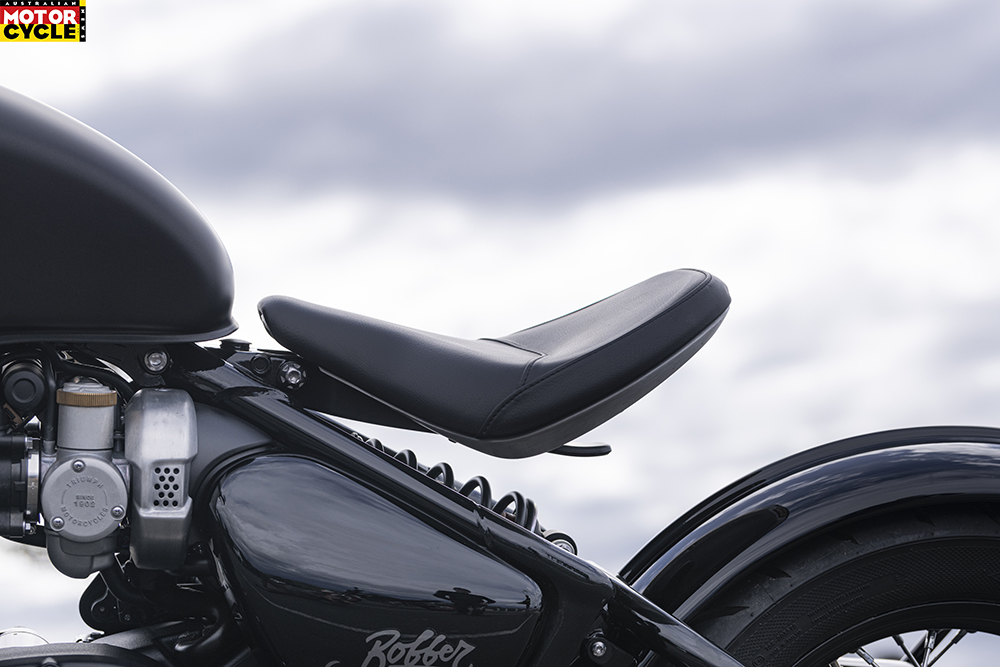
You adopt a forward-leaning riding position on the Bobber, but the reach to the flat and wide handlebar is not excessive, and nor is the leg stretch to the footpegs. Pete Vorst rode the Bobber for the photo shoot, and he reckoned the riding position was a bit cramped for his larger frame, but it suited me to a tee.
Lean down and turn the key in the side-mounted ignition barrel, then thumb the starter, and the big twin replies with a nice deep growl through the sawn-off pipes; it’s not excessively loud but it’s a tasty note. Pull in the lever for the torque-assisted clutch and you’ll be surprised how light it feels. Selecting first comes with an audible clunk, and you will hear this as you work your way up and down the ratios, but it slips between gears easily enough, and I never once hit a false neutral. And if you want neutral, it’s easy to find, first go, every go.
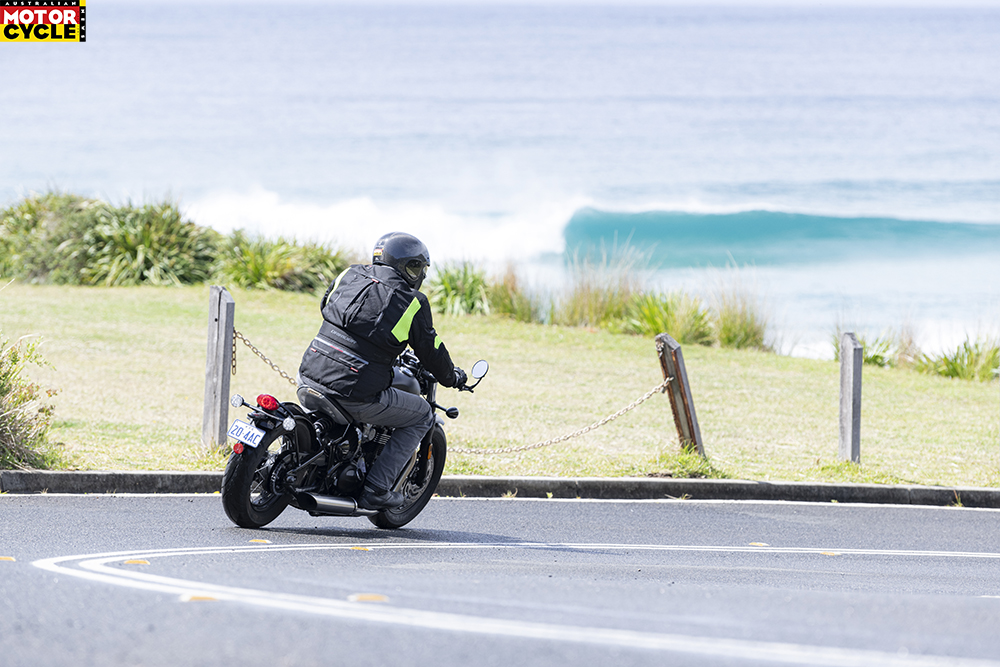
The 1200cc parallel twin makes a claimed 57.5kW at 6100rpm and 106Nm of torque at 4000rpm. Have a look at the torque curve and you can see that the real action starts as low as 2500rpm, where there’s almost 100Nm on offer, and this, incidentally, is where the tacho sits at 100km/h in top gear. What this means is that despite the tall gearing, you can lope along in top gear and just twist the throttle if you want to up the pace without needing to downshift.
While peak power comes on at 6100rpm, there’s not really much point in exploring the upper half of the rev range… unless of course you’re in a real hurry. The engine will eventually climb to the 7000rpm redline, at which point the rev-limiter will spoil the party, but there’s not a lot of point in doing so; you’re much better off making the most of that torquey bottom-end and midrange.
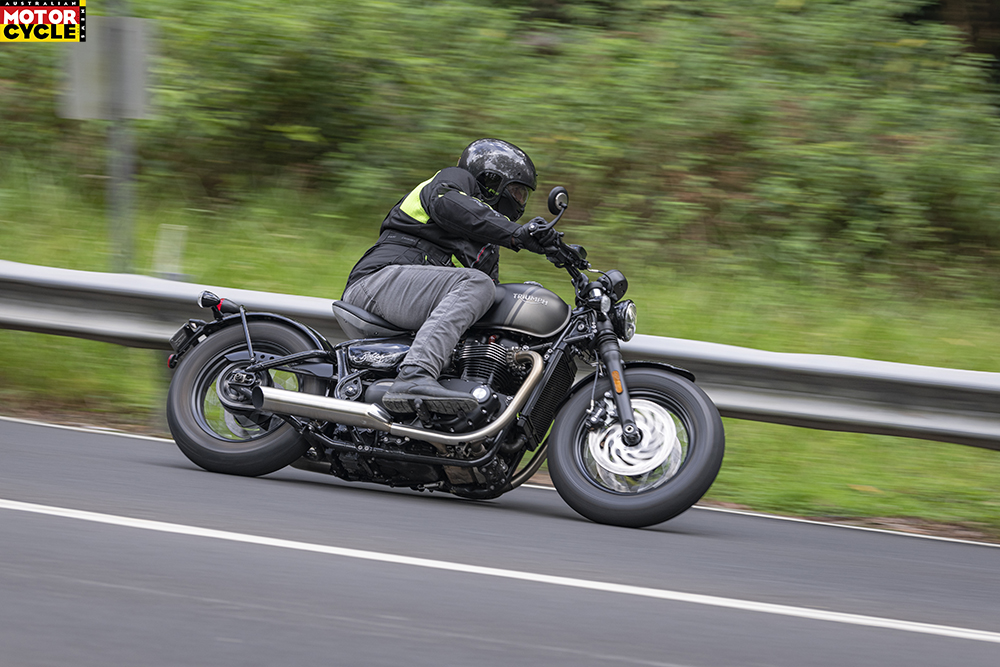
Having said that, the tasty exhaust note only improves as revs rise, so chances are you’re going to want to grab big handfuls of throttle whenever you get the chance. Do so from low revs and sometimes the fuelling feels a bit off, so the twin will give a little hiccup before it catches its breath, but it’s well worth it. You’ll also be rewarded with addictive pops and crackles on the overrun as you shift down through the ratios. I reckon most Bobber riders will waste no time before flicking the standard pipes in favour of something a bit louder.
The traction control can be switched off for silly shenanigans, but when on (the default setting) its sensitivity is dictated by the ride mode, of which there are two: Road and Rain. I can vouch for the effectiveness of the TC on wet roads – it works well in Rain mode. And those Avon Cobras offer decent grip in the wet too.
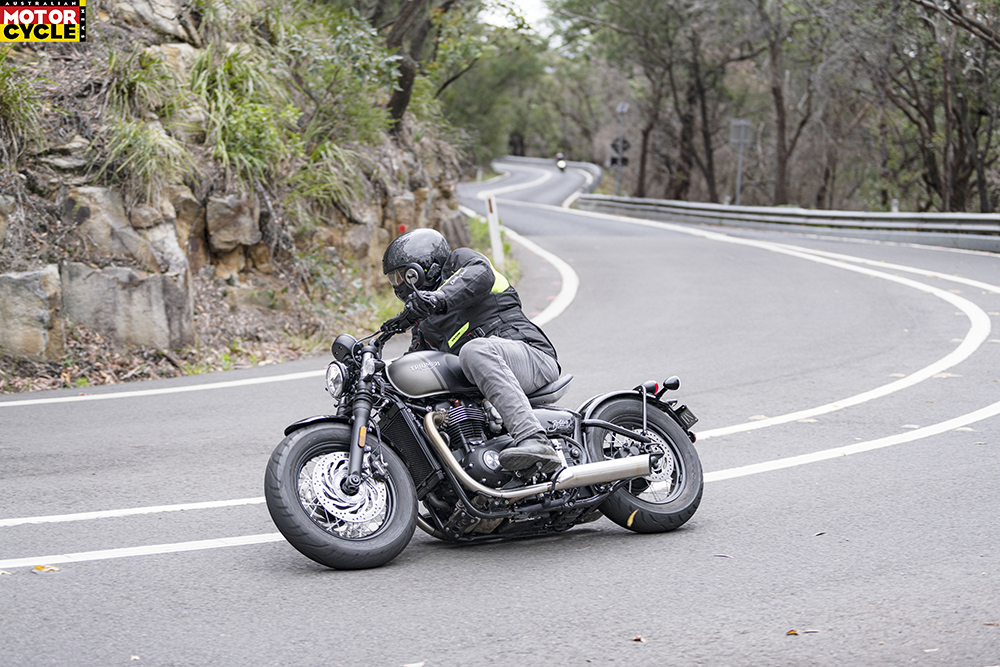
You might think that the chunky front tyre would slow down the steering, but the not-too-fat 150-section rear no doubt helps the Bobber to tip into corners with relative ease. While it holds a line well, it doesn’t take too much effort to scrape the ’pegs, and it will run wide if you so much as brush the front brake mid-corner; a dab on the rear tightens it up, but the back-end stopper doesn’t have a lot of feel or power.
The twin-piston Brembo stoppers up front are new for 2021 and they offer decent stopping power and much better feel than the rear. The ABS seems well sorted and not overly intrusive under hard braking.
Also new for 2021 is the 47mm Showa fork, which offers a reasonable combination of comfort and control. The same can’t be said of the rear shock; the Bobber doesn’t like crook backroads, and big bumps can throw it off-line and send a jolt up your spine if you’re not ready for them.

That cool-looking seat is quite firm, but it’s also more comfy than you’d think, offering enough wriggle room if you get the urge to move around. The larger for 2021 (but still small) 12L fuel tank will see you stopping at the servo every 200 clicks or so, providing plenty of opportunities to stretch your legs on longer rides. On test the Bobber averaged 5.3L/100km, and the low-fuel light came on after around 180km.
The one-button cruise control works well enough – press once for on, press again to set the speed and again to cancel – but without up or down buttons you have to get your speed bang-on where you want it before setting the cruise. And yes, you can also cancel the cruise by dabbing the brakes.
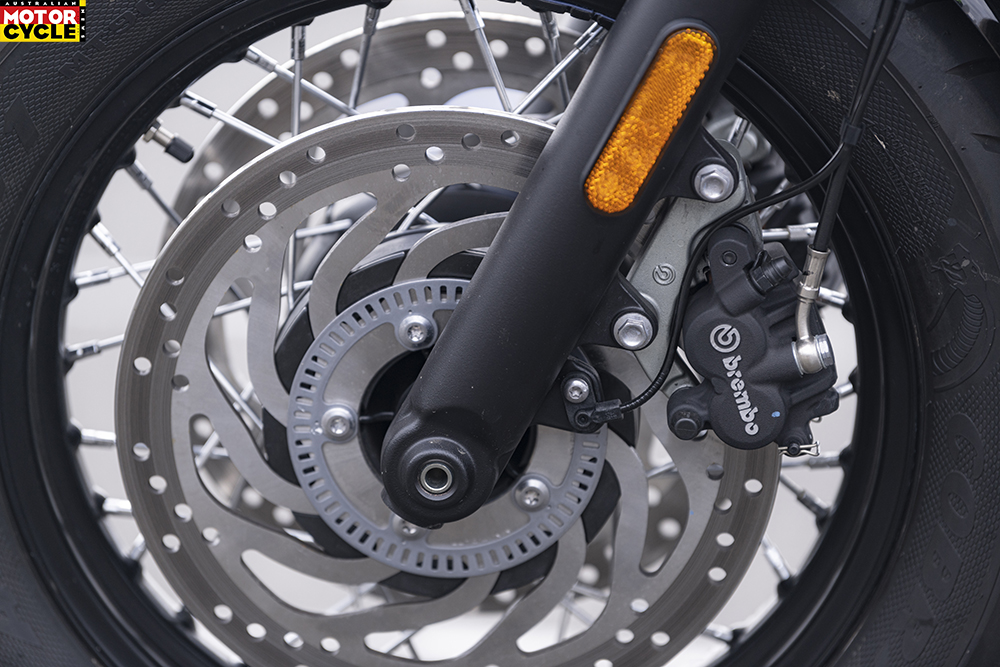
The rest of the Bobber’s controls and instruments are basic, with an ‘info’ button on the left switchblock to scroll through the LCD readouts on the single-dial speedometer. Information includes TC setting, ride mode setting, odo, a couple of trips, instant and average fuel consumption, distance to empty, clock and digital tacho, but some of this info is small and hard to read. The levers are span adjustable and the ’bar-end mirrors are vibe-free and offer a decent view to the rear without minimising lane-splitting capability.
When it comes to practicalities, the steering lock is a separate key-operated jobbie up near the head stock. It’s spring loaded so easily unlocks and only stays in the locked position when you pull the key out, so you’re not likely to leave your key in there. If you want to carry anything on the Bobber, you’ll need a backpack or a tankbag, or you could buy the optional genuine accessory soft panniers. Triumph says it has more than 70 accessories to suit the Bonneville Bobber.

Finally, don’t try to squeeze any more than 12L of juice into that 12L fuel tank; if you fill it too much while it’s on the sidestand, it will spill out of the cap once the bike is upright. When I first picked the bike up from Triumph, I could see marks from evaporated fuel down the side of the tank, and I added to this myself the next time I topped it up.
I thoroughly enjoyed my couple of weeks hanging out with the Bonneville Bobber, both as a riding mate out on the road and a drinking mate in the shed. Sure, it ain’t perfect, but I reckon mates can be forgiven for their foibles.
